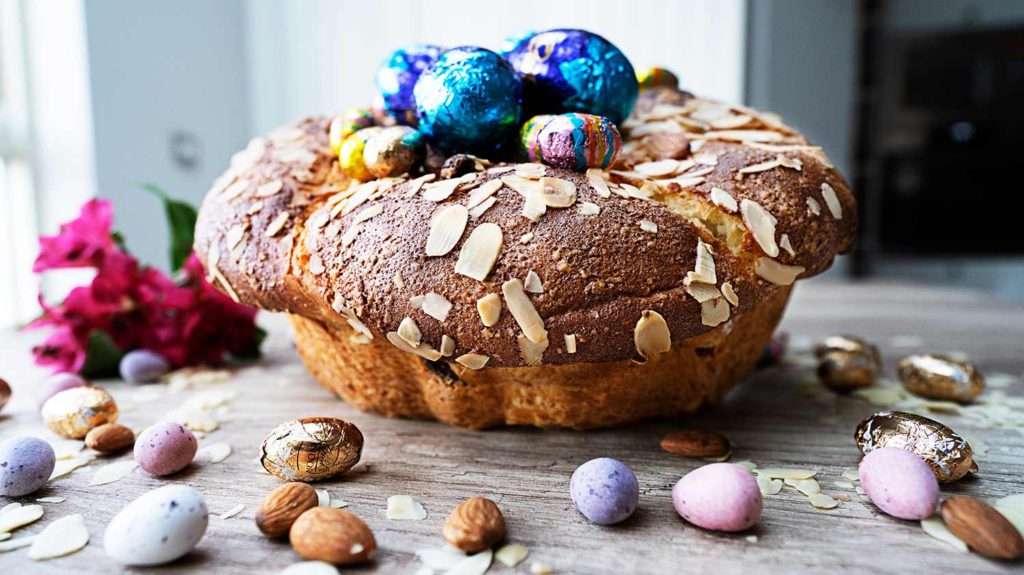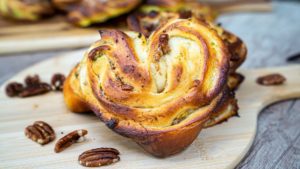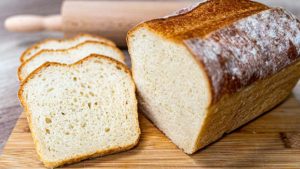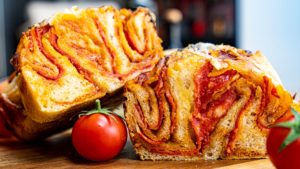How much do you know about Easter Bread? I think, every country in the world has its own version of easter bread, which is deeply rooted in local traditions. From Eastern European Pasqua and German Osterbrot to Corsican Caccavellu, they are all symbols of spring and rebirth.
My personal favorite is La Colomba Di Pasqua – traditional Italian Easter bread from Milan, made in the shape of a dove ( from Italian “Colomba” – dove), that combines tender butter notes of easter bread, mixed with candied orange peel, almonds, and sugar.
I love Easter. For me, it marks the start of real spring, with longer days and warmer evenings. And for my Easter dinner this year, I was looking for something special. Hence, Italian Easter cake seemed like the perfect choice. To be perfectly honest, I did not have my very own version of classic Italian Easter Bread. Therefore, I had to turn to Google for help in finding the very best recipe to play with.
Finally, after a good few searches, I came across Laura’s recipe. It was indeed a sweet spot between a quite complex process of traditional Italian Easter Bread and fantastic taste. So, thank you, Laura, for sharing this amazing recipe!
My readers probably know this by now, but I never copy-paste recipes from others, rather use them for my inspiration. Laura’s recipe was really great to work with.
Although it took me a few attempts and tests, I finally modified it to my taste, by adding few extra touches: rum and orange flavors and vanilla paste. I know, those are not exactly traditional components for La Colomba, but I am very happy with my own version of Italian Easter Bread. In addition, I do believe, I managed to bring the final taste to another level, as a good few of my neighbors who tasted it – already kindly asked if I could make it for upcoming Easter.
I really hope you will enjoy it and don’t forget to leave a comment down below.
Have to warn you – this recipe is probably more on the complex side, but if you carefully follow my instructions – you will have no problem making it. There is also have a video tutorial down below to help you out.
PS If you are searching for another type of treat, feel free to check my White chocolate and cherry brownies and Irish Guinness soda bread.
Let’s do it!
As I mentioned a few times before, I like to weigh up my ingredients in advance with my kitchen scales. And I always take out my butter from the fridge a few hours in advance, to get it to room temperature.
Italian Style Easter Bread Recipe
Wanna do it in Italian style? Then you must try this Italian Easter Bread! Sweet and delicious, you will be blown away by how good it is. As always, it's a treat for your eyes and your taste! ❤️🔥
Ingredients
Biga:
- 150 grams Water (room temp)
- 0.5 grams Dry Yeasts
- 180 grams Plain Flour
Dough:
- all Biga
- 3 eggs (medium)
- 100 grams Warm Milk
- 450 grams Plain Flour
- 70 grams Unsalted butter
- 20 grams Dry Yeasts
- 150 grams Sugar
- 30 grams Water
- 8 grams Vanilla Paste
- 5 grams Salt
- 2 grams Rum Flavour (optional)
- 2 grams Orange Flavour (optional)
- zest of 1 orange
Add-in:
- 100 grams Dry Raisins
- 80 grams Italian Mixed Peel
Glaze:
- 1 Egg White
- 20 grams Sugar
- 20 grams Ground Almonds
- Decoration: Roasted Almonds and Almond Flakes
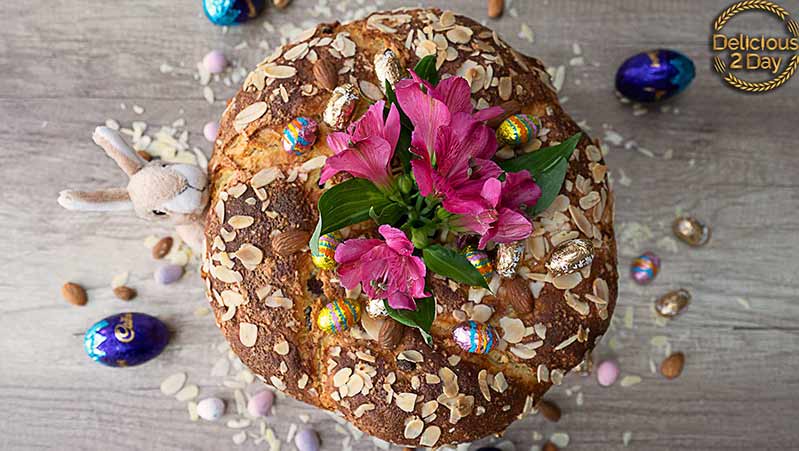
Instructions
- Start with making biga - your starter or as others call it - pre-fermented dough. Simply mix well water (room temp), yeasts, and flour. I used a fork to combine it until it formed a paste dough. After that - simply leave it to ferment for 12-16h at room temperature. This is done to develop more taste and flavor for your cake. I suggest you prepare biga in the evening and leave it overnight, so it is ready for you the next morning.
- Once your biga is good to go, you can start making your main dough. Add all ingredients (biga, eggs, milk, yeasts, flour, sugar, soft butter, salt, vanilla paste, orange zest, rum, and orange flavors) into the bowl and mix. I prefer to use the opposite side of the wooden spoon for this purpose, as it works really well for this type of dough. You don't necessarily need to develop a good dough while using the "lazy technic" of dough mixing. Once you see that all ingredients are well combined - cover the dough with cling film and leave aside for 15-20 min.
- While the dough is developing, get ready with your add-ins: cover raisins with boiling water and let them soak for 15 min. After that - drain the water and dry raisins by placing them between paper towels. Now you are ready for the most exciting part - adding inclusions into the dough.
- After your dough has rested, take it out of the bowl and place it on the dusted surface. Flatten the dough with your hands. Put add-ins (raisins, caramelized orange peels) on top of the dough and wrap it from all sides. Turn it to the other side, and keep folding the dough as you roll it. Repeat it few times, until you see all your add-ins distributed well into the dough. Place it back into the bowl, cover with cling film and let it rest for another ~2h until it doubles in size.
- Prepare your tin, by greasing it with oil and dusting it with flour, as a measure to ease your cake de-panning after. Trust me, don't skip this step. This dough is very sweet and will stick to the tin if you don't grease it.
- Once the dough has doubled in size, take it out again and split it into 3 equal pieces. Gently round each of them and then start rolling your dough into strings. Depending on the size of the tin - you want to have your final braided dough at the same as your tin (mine was ~45 cm long). You can check my video below fro help you with this process.
- Cover the tin and leave your dough to proof for another ~1.5h at room temperature.
- Meantime, prepare your glaze: whip 1 egg white with sugar, until it forms soft foam. Add finely ground almonds and mix them in well.
- Once your dough is ready - take the kitchen brush and cover the top of the cake with our egg white glaze. Decorate with almond flakes and roasted almonds.
- Bake at 180 °C (350 °F) for ~45 min without fan.
Notes
Let it cool before serving for at least 45-60 min.

